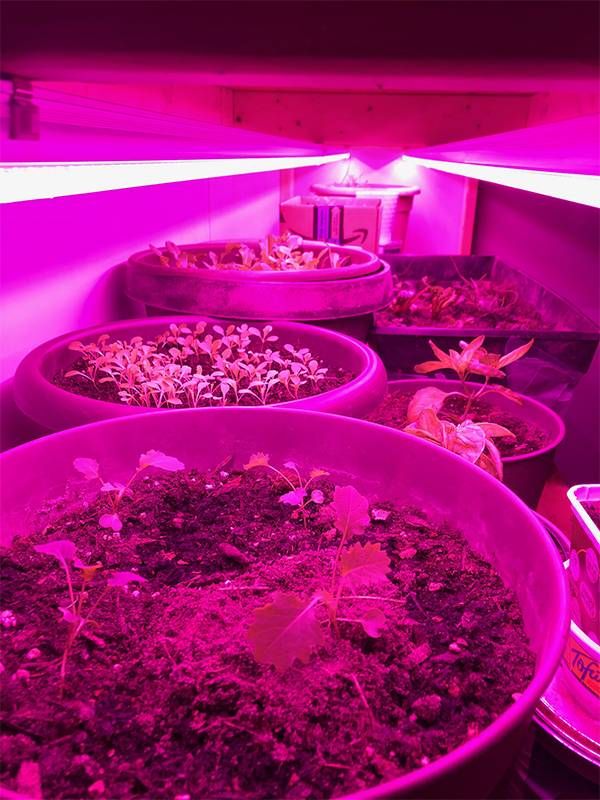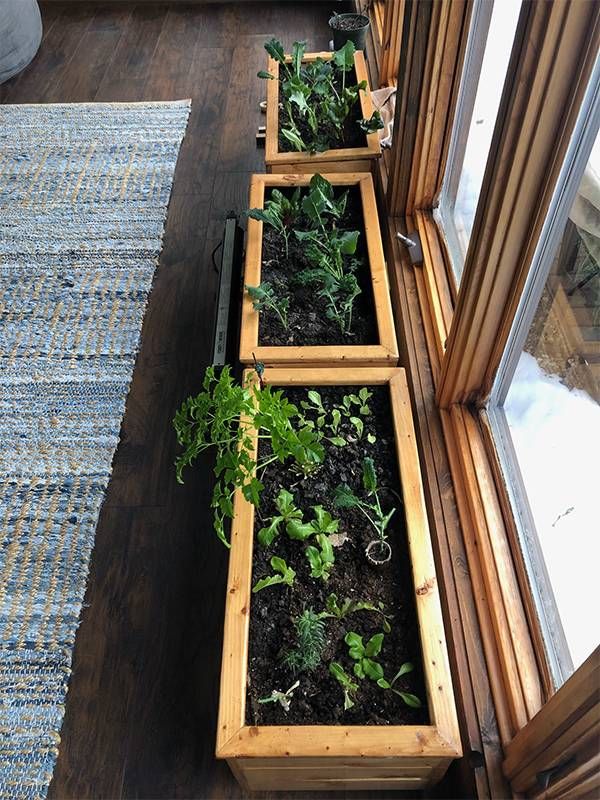Starting an Indoor Garden Is Bringing Me Joy
How a new twist on an old hobby helps me survive this cold, isolated winter
Winters are always long, dark and cold here in northern Minnesota. But this winter, in the midst of the COVID-19 pandemic, has been downright brutal.
Normally, right around this time of year my wife and I would be heading to some warm and sunny spot thousands of miles south for a short reprieve from the sub-zero temperatures. This winter, though, we're holed up in our house, trying hard to take comfort in the fact that there are more than 10 hours of daylight now that it's early March.

Though the extreme cold here may be unique, our situation is not. All over the world this winter, moods have grown sullen, patience has waned and tempers have risen, often to the point of boiling over.
At times, I've wondered how we will all emerge from this winter: more or less the same, chuckling and shaking our heads, saying, "Well, that was something," or irrevocably changed, forever on guard against the lurking vulnerabilities the past year has revealed.
I could sit and ruminate darkly about these things for hours. Instead, I descend into the depths of my basement and spend the time gardening.
Paradise Amid the Cement and Two-By-Fours
Honestly, I don't know exactly how I ended up with hundreds of vegetable plants growing on the two-by-four and plywood storage shelves in my basement. What started as an experiment putting a few pots with last summer's surviving kale, chard and herbs near a window in our very chilly "sun room," quickly multiplied and migrated into the temperature-stable environment of our basement mechanical room.
Instead, I descend into the depths of my basement and spend the time gardening.
Now, more than 20 varieties of vegetable plants reach up out of all manner of containers crowded together on the shelves under cheap UV grow lights.
The bare cement floor is cold on my stocking feet. There is a constant cacophony of noise from the furnace, water heater, pressure tank and sewer pump. There is no warm sunlight; only the weak, purple glow from the UV lights. Tiny, gnat-like bugs buzz around everywhere. I find it all utterly sublime.
Here's what always happens: I pop downstairs to deposit the repurposed junk I call "supplies" or to snip some herbs or lettuce, and I see some little thing that needs doing. So, I do it. Then I see another little thing. Pretty soon 15 or 20 minutes have passed and my wife is calling after me, looking for the oregano I was meant to be bringing right up.

I don't know why, but spending time down there with the plants never fails to lift my mood. There are none of the usual benefits of regular gardening — no shot of vitamin D or serotonin from the sun; no mood-boosting microbes in my sterilized potting soil and I get virtually no physical activity from "working" in my four-by-eight foot space. And yet, I know for certain that this little indoor garden has been a key in helping me cope with the unusual stresses of this winter.
I wanted to understand how or why, so I found an expert who explained it perfectly.
The Secret Powers of Creative Hobbies
Carolyn Adams-Price, associate professor of psychology at Mississippi State University in Starkville, Miss., has been studying the benefits of creative hobbies for decades.
"I'm interested in the benefits for middle-aged and older adults, and they're slightly different for each group. For middle-aged adults, the creativity is a stress-reducer; it gives us something to lose ourselves in. For older adults, it's more about the productivity and sense of accomplishment," she said.
In a 2017 paper she and colleagues published in the International Journal of Aging and Human Development, Adams-Price focused on the psychosocial theory of Generativity, first proffered by Erik Erikson in the 1960s.
"It's essentially about leaving a mark on your culture," Adams-Price explained, "and you can do that in one of two ways. Either by mentoring others or through your ideas and creative products. When you create things, you are leaving something behind; something that can help you increase your sense of identity, productivity and self-esteem."
This idea of creating something useful that might outlast ourselves explains a lot about why I've always felt compelled to write and why others pour their spare time and energy into painting, turning bowls, making music, building furniture, knitting, experimenting in the kitchen, making jewelry, weaving baskets or undertaking any number of other creative hobbies.
"The truth is, you get as much out of learning a new hobby as you would if you were expert at it."
But it didn't explain why I'd become obsessed by growing food in my basement, the products of which are very short-lived. That, Adams-Price explained, was likely due to another theory about creativity and quality of life, one that looks at learning and mastery.
"The myth is that it only matters if you're a creative genius," she said. "The truth is, you get as much out of learning a new hobby as you would if you were expert at it. It's about creating mastery."
Her words immediately resonated with me. I knew a bit about traditional vegetable gardening, but I quickly learned that very little of that knowledge would help me successfully grow vegetables inside. And so, I've been forced to learn, by scouring blogs and videos for what little information is out there, but more so by trial and error.

Reflecting on these past months, I realized that learning how to garden indoors has been as fun and exciting as the process of sowing, watering, transplanting and harvesting. That tangible benefit — harvesting and eating the fruits of my labor — is huge, though, and it ties back into the Generativity theory, short-lived though my creations may be.
I'm sure I've spent more money on potting soil and grow lights and the energy to run them than I would have spent buying the same produce at my local grocery store. But as any gardener will tell you, the produce you buy and the tender, vibrant, just-picked variety grown at home are worlds apart.
As for finances, there's a silver lining, too: the money I've spent on my indoor garden is a fraction of what that seaside vacation would have cost.
Still, you can bet I'll be on a plane heading south next year. Right now, though, I'm going downstairs to bask in the weird glow of my 10-watt grow lights and see how my little lovelies are doing today.


